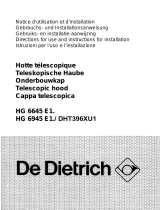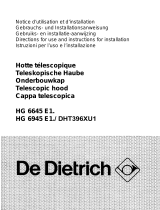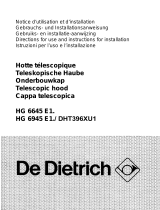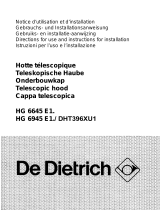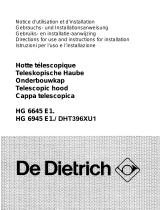
2
IT
1 - GENERALITÀ ................................................................................................................................................ 4
2 - AVVERTENZE PER LA SICUREZZA ............................................................................................................ 4
3 - INSTALLAZIONE ........................................................................................................................................... 4
3.1 - Installazione al muro .............................................................................................................................. 4
3.2 - Installazione al pensile ............................................................................................................................ 6
3.3 - Connessione aspirante o filtrante ............................................................................................................ 6
3.4 - Collegamento elettrico e controllo funzionale .......................................................................................... 7
1 - AVVERTENZE PER LA SICUREZZA ............................................................................................................ 8
2 - USO ................................................................................................................................................. 8
3 - MANUTENZIONE ........................................................................................................................................... 9
3.1 - Filtro antigrasso in fibra sintetica ............................................................................................................. 9
3.2 - Filtri antigrasso metallici .......................................................................................................................... 9
3.3 - Filtri al carbone attivo .............................................................................................................................. 9
3.4 - Illuminazione .......................................................................................................................................... 10
3.5 - Pulizia .................................................................................................................................................... 10
GB
1 - GENERAL INFORMATION .......................................................................................................................... 11
2 - SAFETY WARNINGS ................................................................................................................................... 11
3 - INSTALLATION ............................................................................................................................................ 11
3.1 - Wall installation...................................................................................................................................... 11
3.2 – Wall unit installation .............................................................................................................................. 13
3.3 - Connecting suction or filter hoods ......................................................................................................... 13
3.4 - Electrical connection and working test .................................................................................................. 14
1 - SAFETY WARNINGS ................................................................................................................................... 15
2 - USE ............................................................................................................................................... 15
3 - MAINTENANCE ........................................................................................................................................... 16
3.1 - Synthetic grease filters .......................................................................................................................... 16
3.2 - Metal grease filters ................................................................................................................................ 16
3.3 - Charcoal filters ....................................................................................................................................... 16
3.4 - Lighting .................................................................................................................................................. 17
3.5 - Cleaning ................................................................................................................................................ 17
FR
1 - GÉNÉRALITÉS ............................................................................................................................................ 18
2 - CONSEILS CONCERNANT LA SECURITE ................................................................................................ 18
3 - INSTALLATION ............................................................................................................................................ 18
3.1 - Installation contre le mur ....................................................................................................................... 18
3.2 - Installation avec élément mural ............................................................................................................. 20
3.3 - Connexion aspirante ou filtrante ............................................................................................................ 20
3.4 - Raccordement électrique et contrôle fonctionnel .................................................................................. 21
1 - CONSEILS CONCERNANT LA SECURITE ................................................................................................ 22
2 - UTILISATION ............................................................................................................................................... 22
3 - ENTRETIEN ............................................................................................................................................... 23
3.1 - Filtre anti-graisse en fibre synthétique ................................................................................................... 23
3.2 - Filtres anti-graisse métalliques .............................................................................................................. 23
3.3 - Filtres à charbon actif ............................................................................................................................ 23
3.4 - Éclairage ................................................................................................................................................ 24
3.5 - Nettoyage .............................................................................................................................................. 24























